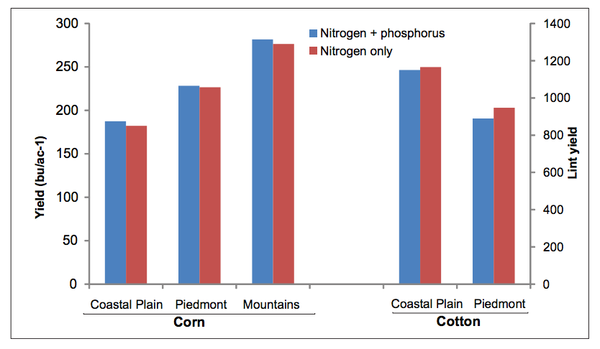
Map of Soybean Buyers in North Carolina
In response to ADM in Kershaw’s pending closure we have developed a list and map of alternative soybean buyers …


El inglés es el idioma de control de esta página. En la medida en que haya algún conflicto entre la traducción al inglés y la traducción, el inglés prevalece.
Al hacer clic en el enlace de traducción se activa un servicio de traducción gratuito para convertir la página al español. Al igual que con cualquier traducción por Internet, la conversión no es sensible al contexto y puede que no traduzca el texto en su significado original. NC State Extension no garantiza la exactitud del texto traducido. Por favor, tenga en cuenta que algunas aplicaciones y/o servicios pueden no funcionar como se espera cuando se traducen.
Inglês é o idioma de controle desta página. Na medida que haja algum conflito entre o texto original em Inglês e a tradução, o Inglês prevalece.
Ao clicar no link de tradução, um serviço gratuito de tradução será ativado para converter a página para o Português. Como em qualquer tradução pela internet, a conversão não é sensivel ao contexto e pode não ocorrer a tradução para o significado orginal. O serviço de Extensão da Carolina do Norte (NC State Extension) não garante a exatidão do texto traduzido. Por favor, observe que algumas funções ou serviços podem não funcionar como esperado após a tradução.
English is the controlling language of this page. To the extent there is any conflict between the English text and the translation, English controls.
Clicking on the translation link activates a free translation service to convert the page to Spanish. As with any Internet translation, the conversion is not context-sensitive and may not translate the text to its original meaning. NC State Extension does not guarantee the accuracy of the translated text. Please note that some applications and/or services may not function as expected when translated.
Collapse ▲
In response to ADM in Kershaw’s pending closure we have developed a list and map of alternative soybean buyers …
The NC State University Thrips Infestation Predictor for Cotton is currently experiencing technical issues and is not forecasting thrips …

Commercially available foliar fungicides (Table 1) were evaluated for their impact on disease and yield responses. Under favorable conditions …

Check out the Tobacco Connection: Vol 2, Num. 1 (Spring 2025 Crop Update), in preparation for this year’s planting …

This post was co-authored by Shannon Holliday, a M.S. student in the Department of Entomology and Plant Pathology, advised …

Field research is a foundation of NC State Extension research, and provides valuable information for farmers to make data-informed …

Spring’s here, and with it the need to look out for wheat and barley diseases. Here are two tools …
Due to the potential for inclement weather this week, NOTICE is hereby given that Tobacco Associates’ check-off referendum has been …

Farmers, agronomists and researchers are invited to Science for Success’ national webinar series Soybean Resilience Blueprint: Adapting to Climate, …

Managing black shank disease in tobacco remains a critical challenge for growers, especially in areas with a history of …

A field trial was conducted at the Upper Coastal Plains Research Station in Rocky Mount, NC, to evaluate different …
Every year, entomologists from the National Cotton States Arthropod Pest Management Working Group are polled on insecticide efficacy. This …
Every year, entomologists from the National Cotton States Arthropod Pest Management Working Group are polled on insecticide efficacy. This group consists …

Join us on December 19th at 9:00 a.m. for a flue-cured tobacco variety webinar! This event is hosted by …

We are excited to launch the first iteration of BeanPACK (SoyBEAN Planting Analytics and Customized Knowledge) that will facilitate data-driven decision making on soybean …
Tropical storms and hurricanes are unfortunate events that are sometimes experienced by people living in North Carolina. Informed decisions …

We are excited to launch the first iteration of BeanPACK, SoyBEAN Planting Analytics and Customized Knowledge, on October 1. …

Bt corn growers are required to plant 20% of their total corn acres to non-Bt corn for resistance management. …

I call the first week of September looper week, and this year has not disappointed. Soybean loopers cannot overwinter …

This factsheet for farmers describes concepts, terminology, and guidelines concerning soil sampling. Proper testing allows …

Nitrogen fertilizer products are being developed and marketed as having the potential to increase yields and …

Phosphorus (P) is the second most important nutrient in crop production but is often found …

This factsheet describes the symptoms of a shoot inhibitor herbicide injury.

This factsheet describes the symptoms of a metribuzin herbicide injury.

This factsheet describes the symptoms of a dichlobenil herbicide injury.

This factsheet describes the symptoms of a protoporphyrinogen oxidase inhibitor herbicide injury.
This factsheet summarizes the symptoms and management of stubby-root nematodes in soybean in North Carolina.